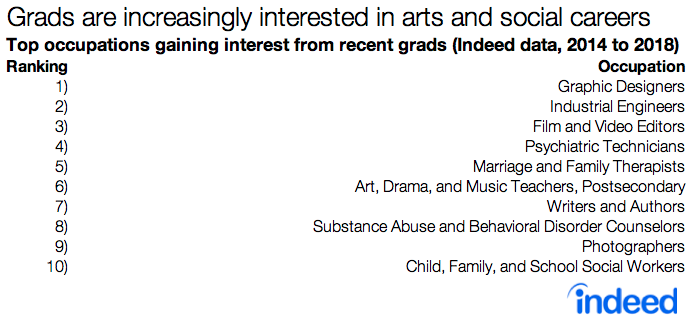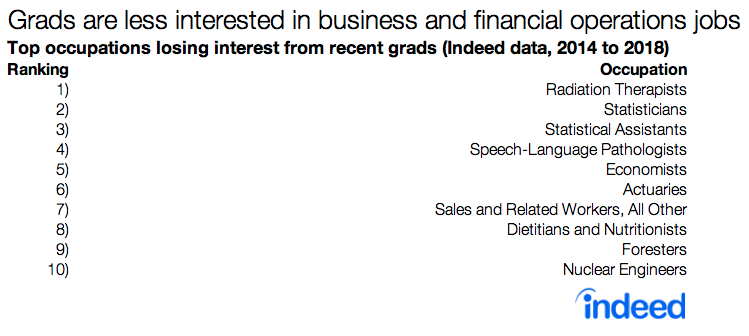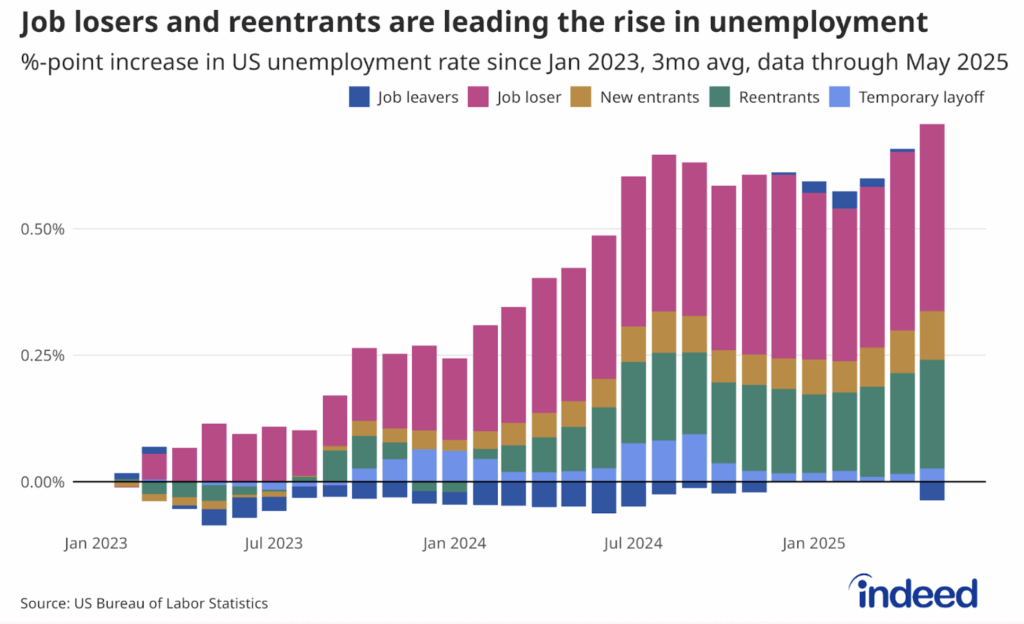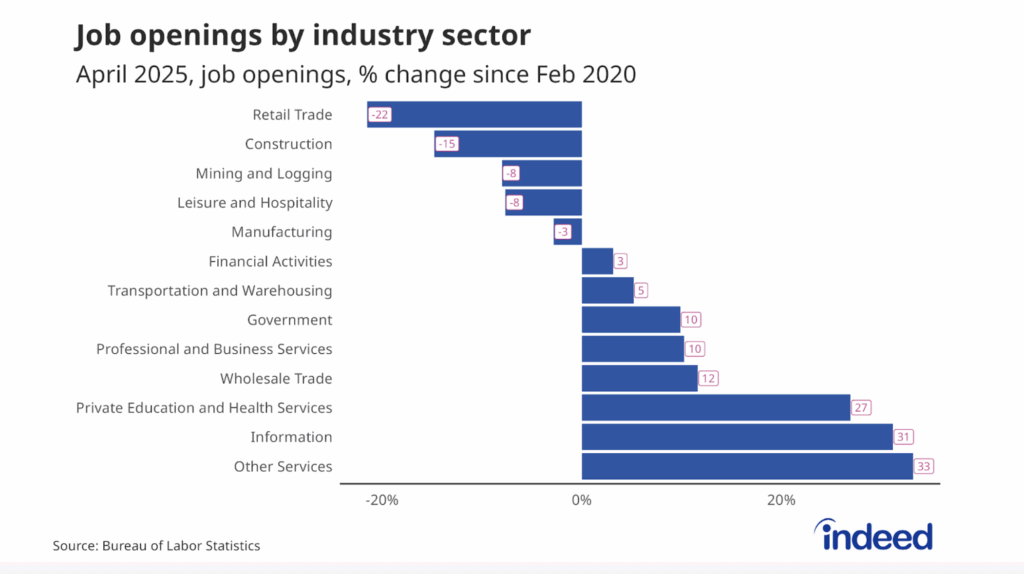Key points:
- Today’s recent graduates are more interested in jobs in the arts and social service than grads were four years ago.
- They are less interested in such occupations as statistician, economist, actuary, and others related to business and finance.
- A tighter labor market is giving new job seekers the security to seek out occupations that might be a better fit for them personally.
- This is great news for employers in the arts and social services, but employers hiring for business and financial roles might have to recruit more actively than they did a few years ago.
A decade ago, recent college graduates faced a labor market still in the throes of the worst economic downturn since the Great Depression. Things couldn’t look more different for the Class of 2019. Today’s job market looks more like the heyday of the late 1990s, the last time the job outlook was as strong.
The tighter labor market is giving recent grads more confidence as they consider their options, allowing them to pursue their interests and values rather than follow a more traditional track. Compared with all job seekers on Indeed.com, today’s recent graduates are more likely to consider positions in the arts and social service than their counterparts were four years ago. They are less interested in becoming statisticians, economists, actuaries, or other occupations related to business and finance.
These new grads feel free to look for the types of work they enjoy, but might have passed up in a weaker economy. The fact that today’s grads are seeking out occupations that might be a better fit for them personally doesn’t mean that they aren’t concerned about future pay prospects. But, for some, high pay isn’t as important now as personal fulfillment.
For employers hiring workers in the arts, social services, and related jobs, this trend is great news. But companies that want to fill number-crunching positions should realize that some of these jobs have lost a little luster. Recruiters will have to work harder to elicit interest.
Arts and social work now more popular for recent graduates
We looked at which jobs get more attention from those fresh out of college by examining which occupations recent graduates are more likely to click on than the average Indeed job seeker.
Comparing 2018 with 2014, new grads became far more inclined to click on jobs in the broad categories of arts, design, entertainment, sports, and media. Other categories that grew fast are connected to service in some way, including community and social services; law; education, training and library; and healthcare support.
A more detailed look underscores the shift toward arts and entertainment, with graphic designer, film and video editor, writer and author, and photographer all making our list of the top 10 occupations that drew more attention from recent grads between 2014 and 2018. Reporter is the 12th-ranked job.
Although recent grads may be gravitating away from traditional high-paying business roles, the occupations they are considering still pay reasonably well. For instance, the occupation that gained the most interest from grads is graphic designer, where the typical worker makes $48,700 per year. The median film and video editor makes $61,180 annually. These jobs might not pay as well as some positions in finance, but they still offer relatively high compensation.

Grads are shying away from quantitative, business-focused occupations
Today’s grads are less interested in the broad business and finance categories, as well as such fields as production; fishing, farming, and forestry; sales; construction; and extraction.
Many of the specific occupations that recent grads are moving away from—though still relatively popular—involve a math-based view of the world. These include statistician, economist, and actuary. Nonetheless, recent grads are still more likely than the average job seeker to click on jobs in all but one of the occupations on our list of 10 jobs that lost attraction the most: radiation therapist.

To a newly minted graduate, many of these jobs might seem to offer a path to stability. When the economy was weaker, recent grads were drawn to jobs that promised security. But, in a strong labor market, job seekers just out of school have the option of moving beyond such a practical approach and following their hearts.
This is good news for employers in the arts and social services. Their workplaces are becoming more appealing for recent grads. But employers hiring for business and financial roles may have to work harder than they did a few years ago to find the right candidates.
Methodology
We define a recent college graduate as a worker with a college degree between the ages of 22 and 27.
We use two different occupational groupings in this analysis. The broader measure is the two-digit Standard Occupation Code. The more fine-grained group is the six-digit SOC level.
Our measure of job seeker interest in an occupation is based on clicks on postings on Indeed.com. We then calculate share of clicks by recent graduates on postings in each occupational group and occupation, and then do the same for the share for all job seekers on Indeed. We then divide the recent graduate share by the overall job seeker share to get an interest ratio for each occupation and occupational group. The higher the ratio, the more relative interest from recent graduates compared with the total job seeker population. We did these calculations for 2014 and 2018.
Occupations and occupational groups with larger ratios in 2018 than in 2014 registered an increase in relative interest from recent grads, while those with lower ratios in 2018 registered declining interest.
We only included occupations and occupational groups for which we had at least 1,000 annual observations.






